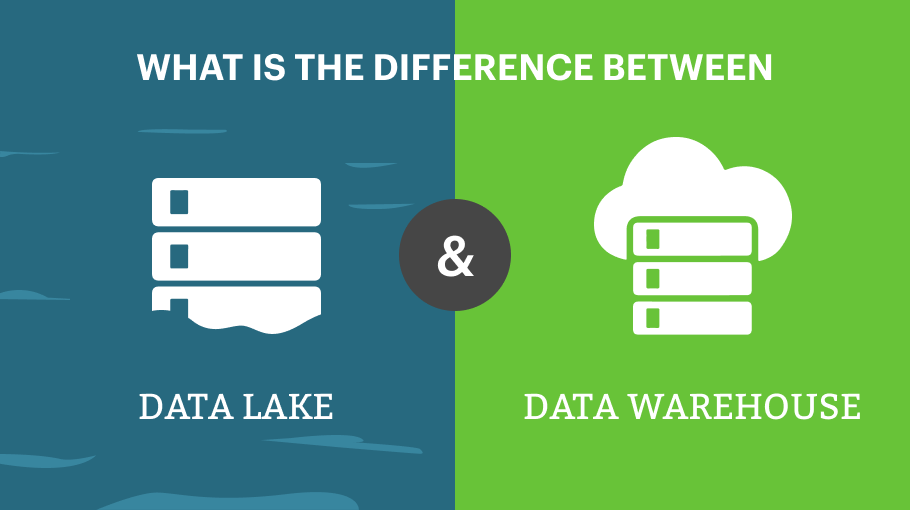Hey there, tech experts!
Ever felt like drowning in a sea of data? Trust us, you're not the only one. These days, it feels like everywhere we take a turn, there's more information to digest. And honestly, we do not know what to do with it. Overwhelming and potentially messy, right? Same sentiments here!
Now, you might be thinking - ‘Data Architecture? Sounds pretty techy and complex’. YES & NO! It’s not merely a modern term to toss around at meetings. Rather, it is the backbone of how successful businesses function in the 21st century.
But there has to be a way and there is! Well, in this advanced world we’re living in, data isn't just a byproduct of doing business. In fact, it has become the foundation of all the prosperous companies. The challenge? Sorting everything out. Making sense of all of it. That is exactly where Data Architecture (DA) comes into play and rules for good!
So, What is Data Architecture?
Alright, let's start with the basics. Think of it like this: If your organization's data was a city, Data Architecture would be the master plan that specifies where everything goes and how it all links. It provides the blueprint for how data should flux through your organization. Further, it confines how data is:
- Collected
- Stored
- Transformed
- Used
But the thing is, Data Architecture is not just servers and databases and all that technical stuff (though that's a major part of it). You must take it as a holistic approach that brings together people, processes, and technology.
It's about asking questions like:
- Where is our data coming from?
- How do we store it securely?
- Who needs access to what information?
- How can we turn this data into insights that help our business?
The Data Management Association (DAMA) gets a bit more technical, defining Data Architecture. They put it as ‘the specifications used to describe an existing state, define data requirements, guide data integration, and control data assets as put forth in a Data Strategy form a Data Architecture’.
Please, don't let this explanation scare you off! Simply put, ‘Data Architecture is the process of developing a framework that assists your organization in making the best use of its data’.
Also, here is another way to look at it! Think of Data Architecture as the foundation of your house. You could have the most gorgeous one. But, if the foundation is not strong enough, the entire structure could collapse. Similarly, you might have the best data analytics tools and technologies, but without a solid Data Architecture, you are building on sand.
So, whether you're a small startup or a large organization, having a well-thought-out Data Architecture is super important.
The Key Components of Data Architecture

Here are the building blocks of DA that fit together. Each has an important function to play, and when they all work together harmoniously, magic happens.
Data Sources and Integration
First things first - where is all this data coming from? Well, speaking of today’s world of technology, data is everywhere. It's pouring in from your website, your apps, your customer service calls, and also, maybe even from sensors on your products. Data Architecture starts by identifying all these sources and figuring out how to bring them together.
This is where data integration comes in. In the world of data, this means:
- Data ingestion: Gathering information from multiple sources.
- Data transformation: Recasting data into a consistent format so everything blends well together.
- Data cleansing: Removing errors and inconsistencies to make sure your data is reliable.
Data Storage
Once you've collected all of this data, you'll need a place to store it. But here's the thing - not all data is created equal. Some of it is highly structured (think spreadsheets and databases), while some is more like a Jackson Pollock painting - beautiful, but chaotic!
Your Data Architecture needs to account for these differences. It might use:
- Relational databases: Great for structured data. Take these as highly organized filing cabinets.
- NoSQL databases: Ideal for unstructured or semistructured data. These are more like the expandable folders that may hold a variety of bits and ends.
- Data lakes: It's a large reservoir into which you may dump raw data of any kind. It is available when you need it, but it may require some processing before it is usable.
- Data warehouses: Data warehouses function similarly to libraries in the data world. The data here is processed and ready for analysis.
Data Modeling
Data modeling is similar to developing a map of your data. It enables you to understand what data you have, how it links to other data, and how it moves through your systems.
There are 3 levels to data modeling:
- Conceptual: This is the big-picture perspective. It's like looking at a globe to understand the layout of continents.
- Logical: Now we're zooming in. This is more like a country-level map, showing major cities and how they connect.
- Physical: This is the street-level view. It shows exactly how data will be stored in your specific database.
Why is this important?
Well, good data modeling makes everything else easier. It helps you avoid duplication and spot associations you might have missed. Also, it makes your data easier to use and understand.
Data Governance
This is where things get serious. Data governance is all about handling your data appropriately and responsibly.
Data governance covers:
- Data quality: Ensuring that your data is correct, complete, and consistent. After all, bad data leads to bad decisions.
- Data security: Protecting your data from unauthorized access or breaches. Data is gold and you need to guard it no matter what!
- Data compliance: Meeting regulatory requirements. As per your company’s niche, you may have to comply with standards such as GDPR or HIPAA.
- Data lineage: This refers to tracking where your data came from and how it has been altered.
Here’s an intriguing fact!
Gartner estimates that firms with excellent data governance are more likely to generate above-average returns on data and analytics investments.
So, not only is it liable, it's good for business as well!
Data Security

With cyber threats on the mount and data protection regulations getting stricter, your Data Architecture needs to have proper security protocol from the very start.
This involves:
- Encryption: It is the process of enclosing your data in an impenetrable safe to safeguard it throughout storage and system transfers.
- Access controls: This means you have complete control over who can view or revise different types of data.
- Auditing: This is keeping a watchful eye on your data. You're monitoring and logging who accesses what data and when.
- Backup and recovery: This serves as your security shield. It must be possible for you to promptly restore your data if something goes wrong.
Here's a sobering statistic!
According to an IBM Report (2021), the average cost of a data breach was $4.24 million. This shows exactly how crucial robust data security measures are in your Data Architecture.
Data Access and Analytics
After all, what's the purpose of having so much data if you can't use it? This final component of DA is to make your data accessible and actionable.
This includes:
- Data visualization tools: These help users understand data through charts and graphs.
- Business intelligence platforms: These facilitate data-driven decision-making. They enable you to identify trends, forecast future results, and get crucial insights.
- Machine learning and AI: Finally, these advanced technologies can help you find insights you might never have discovered on your own.
Data Architecture in Practice (Real-World Examples)
Sometimes the greatest way to grasp a topic is to see how it is used in practice. For that, let’s discuss two of the most amazing instances.
Netflix
Netflix always wins in integrating data to improve user experience. They have a DA that can manage massive amounts of data from millions of people globally.
Here’s a simplified overview:
Component | Technology Used | What it Does |
Data Streaming | Apache Kafka | Handles real-time data streaming |
Stream Processing | Apache Flink | Processes streaming data in real-time |
Large-scale Processing | Apache Spark | Processes large batches of data |
Storage | Amazon S3, CloudFront, Redshift | Stores and distributes data |
Enhanced Processing | ICEBERG, Druid | Provides additional data processing capabilities |
Database Management | CockroachDB, MySQL | Manages structured data |
This architecture allows Netflix to do some pretty amazing things. They can process real-time streaming data to understand what users are watching right now. Further, they can personalize content recommendations based on viewing history and preferences. And, they can optimize video delivery to ensure smooth streaming even during peak times. Fascinating, right?
Uber
Uber's Data Architecture is all about handling real-time data from millions of rides around the globe.
Here's what it looks like:
Component | Technology Used | What it Does |
Data Ingestion | Apache Hudi | Ingests large volumes of data efficiently |
Batch Processing | Apache Spark | Processes large batches of data |
File Management | Parquet | Manages data files efficiently |
Storage | Hadoop | Stores large volumes of data |
Data Streaming | Apache Kafka | Handles real-time data streaming |
Analytics | Flink | Provides real-time analytics |
Real-time Data Serving | Pinot | Serves real-time data to applications |
This helps the company process vast amounts of trip data in real-time, optimizing routes based on current traffic conditions. Moreover, they can adjust pricing dynamically based on demand. And... they can match drivers and riders efficiently, minimizing wait times.
Here's a final interesting statistic to chew on!
The global Data Architecture Modernization Market was valued at $68 Billion in 2023 and is expected to reach $ 131.43 Billion by 2031, That represents a compound annual growth (CAGR) of 9.87% from 2024 to 2031.
Clearly, Data Architecture is a field that is only going to become more significant in the coming years!
Takeaway
Whew! We did cover a lot of ground, didn’t we? If your head is spinning a bit, don't worry. That's normal. DA is a complex field and we have just scratched the surface.
But here's the final takeaway: Data Architecture is no longer a nice-to-have - it's a must-have! And, now you clearly know why!
Related Posts
Data Warehouse Vs. Data Lake: Here’s What You Need To Know
You know how it feels when you open your closet and it’s just… chaotic? Shirts…
How to Build a New Comprehensive Data Operating Model
As technology continues to transform our lives, many companies have found new ways to analyze…
Two Ways To Calculate Sales Lift For Measuring Marketing Results
We are now in a golden age of digital marketing. Across all functions of a…
Seven Simple Ways To Keep Up With Massive Data Sets
Can anyone keep up with massive data sets? Business competition is increasing at unprecedented levels.…







🔍 Notification: + 1.595556 BTC. Verify => https://graph.org/Ticket–58146-05-02?hs=d1e3f28dd7298b739baea2fda0a6705d& 🔍
May 10, 2025hmbbe2